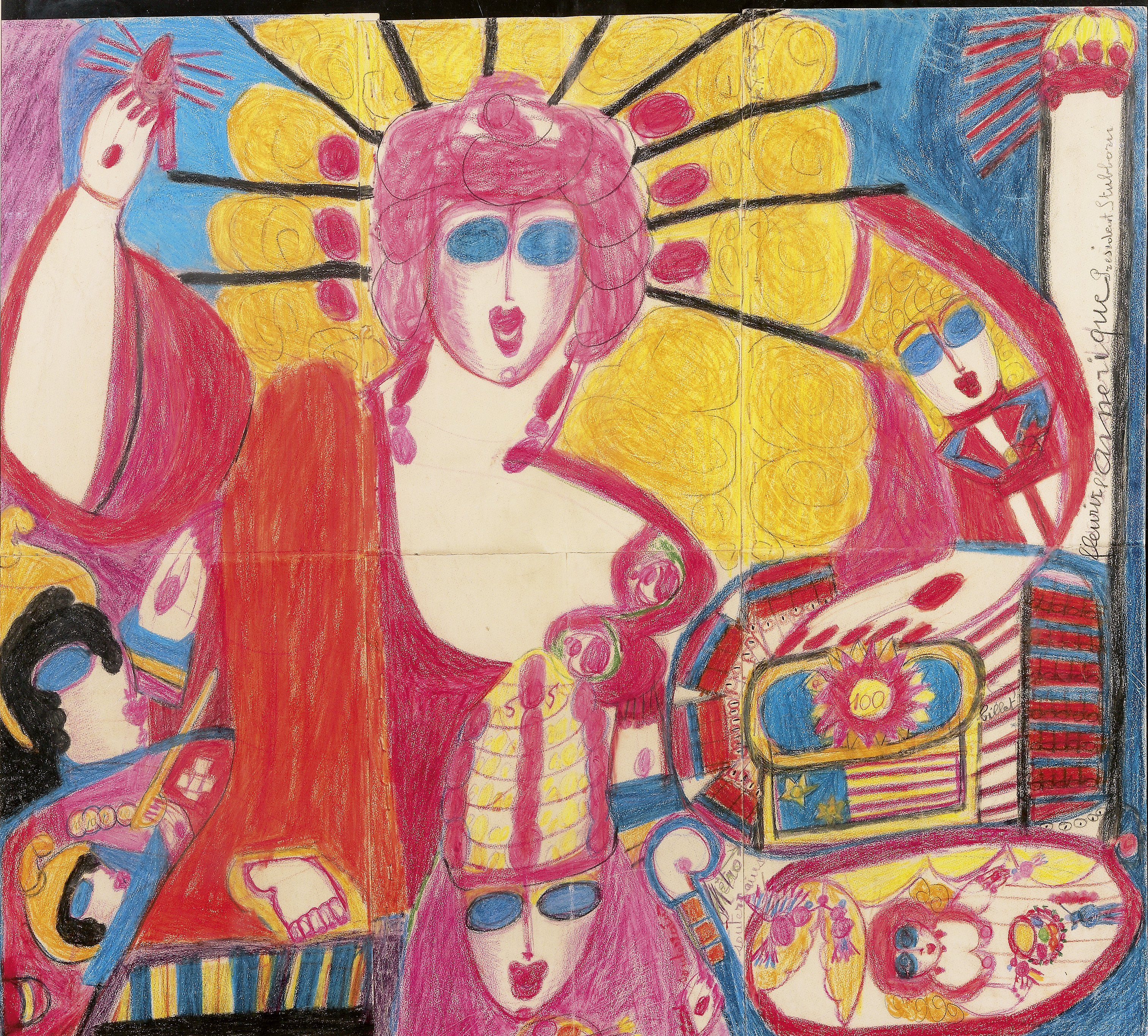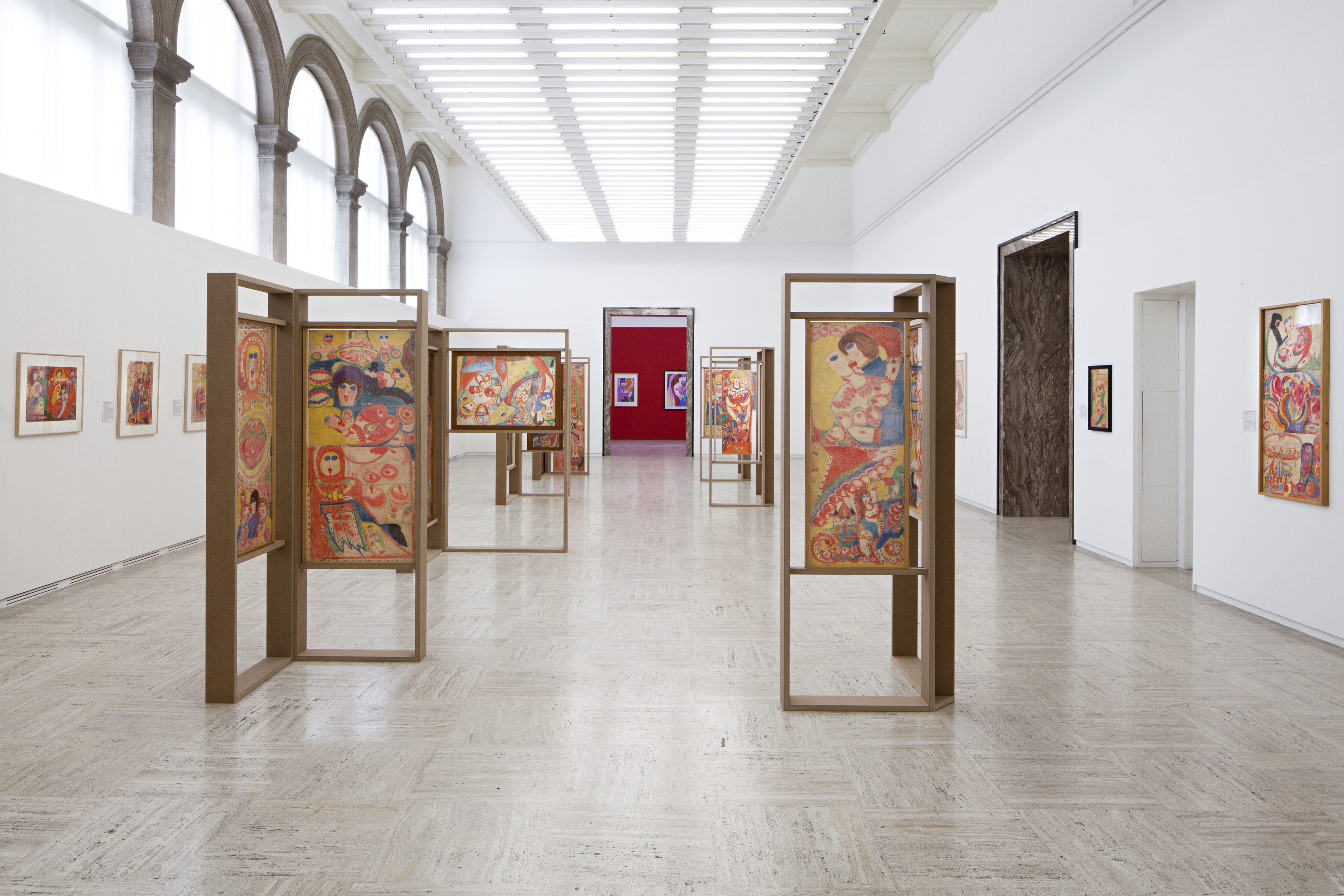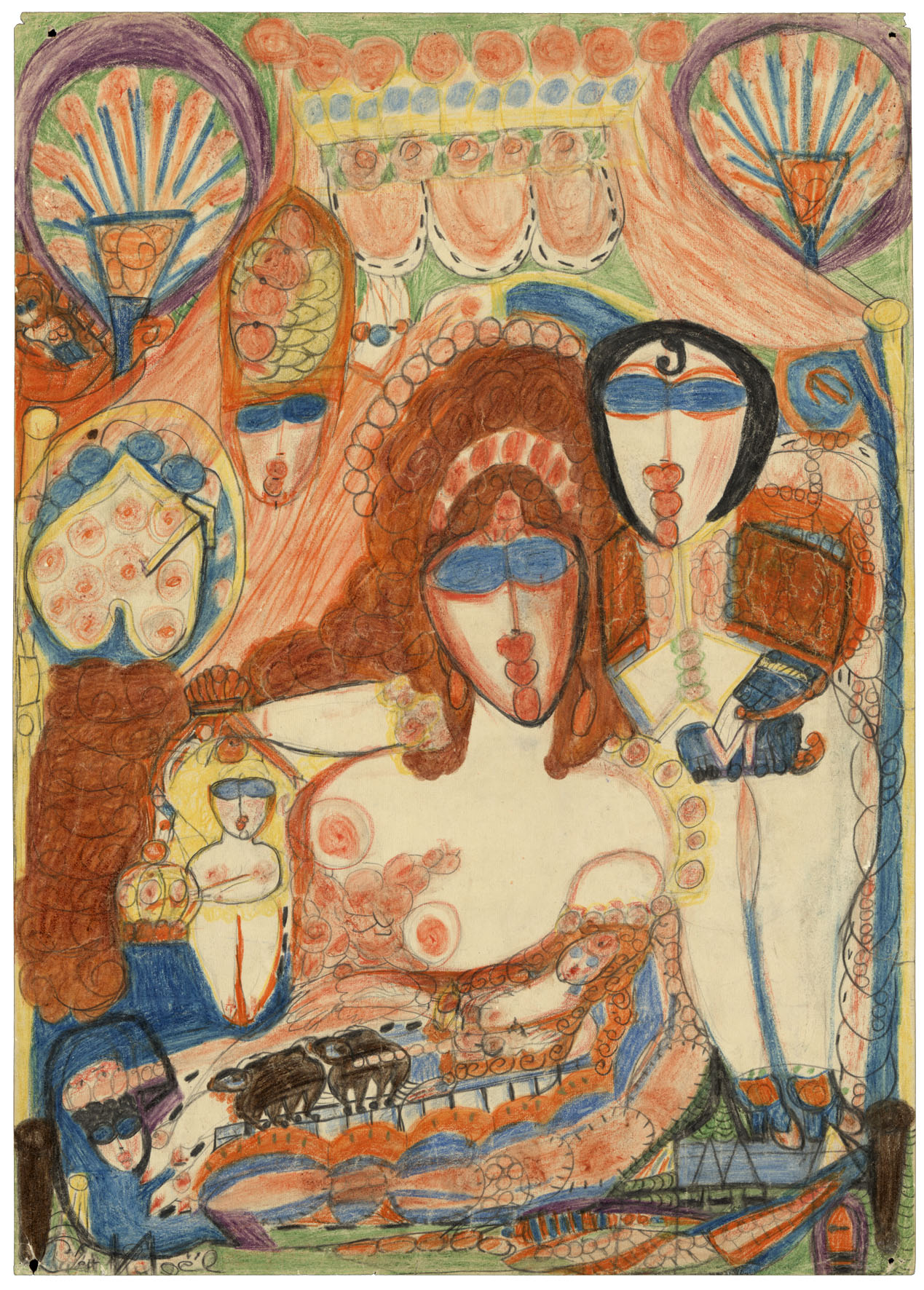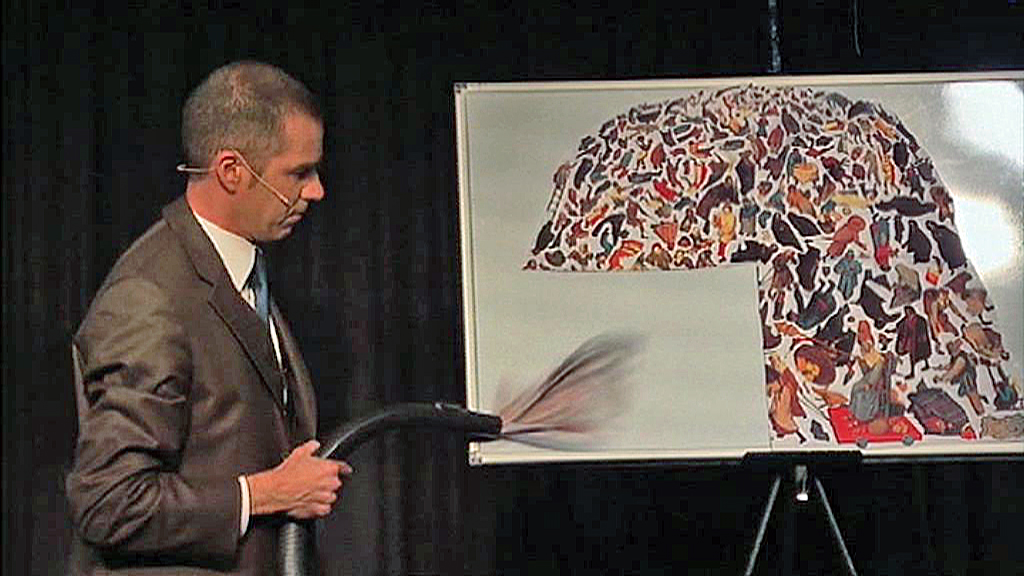When talent outshines handicap

In Fribourg, an original project offers mentally and physically disabled people the opportunity to exploit their creative talents; to work in an atelier, to exhibit and sell artwork like any other artist.
The atelier Creahm is tucked away behind the École de Cormanon in a suburb of Fribourg. Bright and spacious and rented for a song from the local parish, it is the workplace of 18 artists who spend one to three days a week there. It encloses a subtle disorder of easels, tables, paint pots and brushes, works of art and a library of art books.
When swissinfo.ch visits, there are eight artists making presentations around the kitchen table accompanied by coffee and biscuits. Some are able to talk, others are not.
One of them, Elmar Schafer, is painting a picture with a lot of movement. He is sitting in a wheelchair, wearing a helmet with brushes attached to it. Everybody is absorbed in their own world, creating a particular silence.
A professional framework
Creahm is an acronym for creativity and mental handicap. It stands for a concept which aims to offer mentally and physically disabled people with a talent for plastic arts a professional setting.
“I’ve found this line of work interesting, particularly the idea that there are gifted people in this population like in any other, and that we should offer them a place to express themselves. We don’t deal with health issues, we are working among colleagues, and if necessary we give them a hand,” explains Ivo Vonlanthen, co-founder of the atelier.
Animator Gisèle Poncet clarifies: “We don’t practice art therapy, because it’s not our job to make a diagnosis or to cure somebody by means of art. We offer technical support, we have art books, and we also have mandates. The artists have a trial period before they sign their contracts. They must fulfil defined criteria and produce quality work that is destined to be shown and sold to the public.”
Jean-Michel Robert, himself a painter, is supporting the staff.
“There are a lot of dynamics,” he said. “We have to make the frames, squeeze the paint tubes and fix the brushes for those who cannot use their hands. The works often exude a lot of originality, freedom, but also power because the human being with all its torments, fears, joys is at the centre of their expression. In that regard, it’s not different from my own work.”
Dynamic, colourful and proud
Myriam Schoen’s corner is an atelier within the atelier. Her dynamic and colourful compositions often depict an imaginary landscape permeated by the four elements. She proudly presents her paintings and – judging by the number of works – she is a prolific painter. With the help of a vocal device she explains that in addition to the three days at Creahm, she also works a fourth day at an atelier in Bern.
“I will have to leave now, I have to catch my train,” she explains, dragging her trolley case along behind her.
A few steps along, Josiane Lauper is piercing folded magazine pages onto a long metal pike, transforming it into a paper sculpture. On her easel, a meticulously coloured canvas is waiting to receive the next swift regular brushstrokes.
“This autistic artist touched me deeply with her ability to get so totally absorbed by her work, to become one with her work. She has really impressed us because she is able to tell incredible stories through her work,” says Vonlanthen.
There is also Stéphane Repond, a 31-year-old artist full of imagination, endowed with a large range of techniques and means of expression, who is using chalk to draw fantasy creatures.
“I’ve been suffering from schizophrenia since the age of 20 and I’ve been hospitalised several times. I started to paint in 2005, initially to pass the time, and then it became my passion,” he says.
Repond participated in an “unforgettable, fertile and wonderful” workshop at an associated atelier in the Czech Republic. With five other members of Creahm, he is currently preparing an exhibition entitled “Fuori Dentro” (Outside Inside). For this event, which will take place in November, they will form pairs with six non-disabled people.
No charity
Creahm fixes its prices – half of which goes to the artist and half to the atelier – which are the same for everybody.
“Some sell more than others, that’s normal. Véronique Bovet, for example, who died last year, sold everything. The Collection de l’Art Brut in Lausanne bought several of her works. But the exhibitions display the work of the entire group, so it’s evened out, without any resentments,” explains Creahm’s secretary Sylvie Genoud.
Selling is complicated and prices rarely exceed SFr1,000 ($1,034). It is not a problem to exhibit in public places, even abroad, but it is, however, not easy to find private galleries prepared to accept exhibits from a whole group, including works which may not sell so well.
That said, some will exhibit free of charge. One example is Galerie de la Schürra.
“Whether it is their works of art or their personality, I love these artists. They like to think of themselves as artists and they do not benefit from any public funding. I reckon we need to help them,” says owner Nicolas de Diesbach, who is also a member of the Creahm committee.
“At the beginning, the public was a bit condescending, but the people attended as much as they would have with any other exhibition, and almost all of the art pieces were sold,” de Diesbach says. “But we are not talking about a charity sale: The people are buying because they like the artwork. Younger people may also be interested because they can afford it.
“The most striking is that for almost 15 years these artists have stuck to their style, their inspiration and their world without affecting each other. If ten non-disabled artists had been working together for all this time, they would have ended up doing exactly the same thing!”
The first atelier was created in Belgium in 1982 by Luc Boulangé, who was convinced that for gifted people suffering from mental or physical disabilities, the plastic arts may represent a privileged mode of expression, a meaning of life and an artist’s identity as long as they are given the necessary means.
The association in Fribourg was founded in 1998 by Jean-Luc Lambert, a professor of psychology at Fribourg University, and painter Ivo Vonlanthen. Its survival depends to a large extent on the sale of the works exhibited.
This style does not differentiate itself from other types of art by the particular nature of its creators, but by the context that allowed for its creation.
Contractually bound, 18 artists between the ages of 17 and 55 spend one, two or three days a week at the workshop, assisted by two animators.
The cooperation contract fixes the sale prices: with half each for the artist and the atelier. The latter does not benefit from any public funding and depends on the financial support of sponsors and membership fees. Its annual budget is SFr80,000 which covers rent, salary for three employees and equipment. Some SFr20,000 comes from the sale of art works.
This term was coined by French painter Jean Dubuffet (1901-1985) to describe the art produced by self-taught people who have not received any cultural conditioning and do not conform to any social expectations. By and large sick, imprisoned or excluded from society, the creators ignore the canons of art and traditional cultural values.
From 1945, Jean Dubuffet went in search of works of art that were liberated from cultural norms. He very quickly linked up with writers, artists and Swiss psychiatrists.
1971: Contracts were concluded between Jean Dubuffet and the town of Lausanne with regard to a donation and the Collection de l’Art Brut was created in 1976.
(Translated from French by Chantal Britt)

In compliance with the JTI standards
More: SWI swissinfo.ch certified by the Journalism Trust Initiative



You can find an overview of ongoing debates with our journalists here. Please join us!
If you want to start a conversation about a topic raised in this article or want to report factual errors, email us at english@swissinfo.ch.